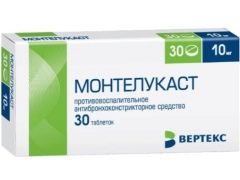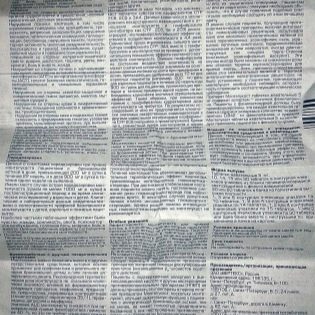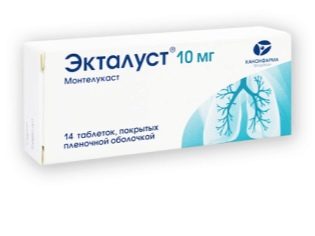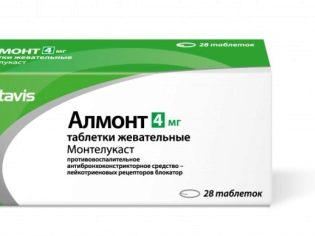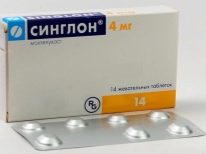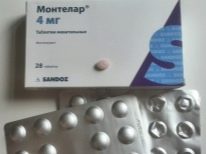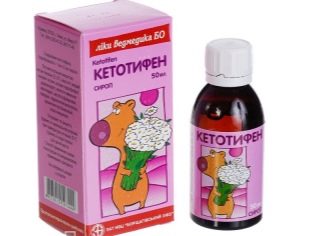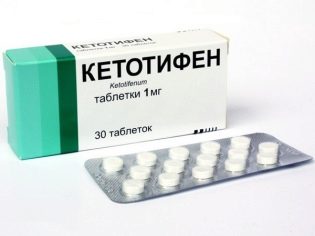Montelukast for children: instructions for use
To reduce the number of attacks of bronchial asthma or to cure a patient of allergic rhinitis, hormonal medications are often prescribed. However, they have many contraindications and harmful side effects. An alternative to such drugs are anti-bronchoconstrictor anti-inflammatory drugs without hormones, for example, Montelukast. It is prescribed for asthma and the common cold of an allergic nature, not only for adult patients, but also for children.
Special features
"Montelukast" is produced by the Russian company Vertex in several dosage forms.
- Chewable tabletswhich are characterized by a round shape, sweet taste, smell of cherry and white color. Each tablet contains 5 mg of active substance, which is also called montelukast. Compounds such as hyprolosis, MCC, aspartame, mannitol, cherry flavoring and magnesium stearate supplement it. These tablets are sold in blisters or in plastic jars, and one package can hold from 10 to 60 tablets.
- Tablets with a dense shell, whose round shape is convex on both sides and yellow in color. Their active substance is montelukast too, but the dosage of such an ingredient is 10 mg. Among the auxiliary components of the internal medicine ball is croscarmellose sodium, MCC, milk sugar and magnesium stearate, and the preparation is made from talc, iron oxide, hyprolose, titanium dioxide and hypromellose. In one pack of such “Montelukast” there are 10–60 tablets, packed in cell shells or placed in a plastic jar.
Operating principle
Once in the patient's body, montelukast binds to specific receptors. They are called cystienyl-leukotriene, because substances called cystienyl-leukotrienes interact with such receptors. They are inflammatory mediators, that is, they are secreted from different cells during the inflammatory response.
There are quite a few receptors for these mediators, both in the respiratory tract and in the cells that are activated during inflammation. Studies have shown that these mediators play a large role in the development of allergic rhinitis, as well as bronchial asthma, provoking cough, nasal discharge, bronchospasm and so on. When montelukast binds to sensitive receptors instead, it interferes with the development of bronchospasm and rhinitis symptoms, provoked by an allergic reaction.
Indications
The most common reason to assign “Montelukast” to a child is bronchial asthma. The drug is prescribed for the treatment of this disease in order to reduce the frequency of attacks and gradually eliminate them (but not for the relief of an acute attack, since the effect of the drug is not so fast), and for the prevention of night or day symptoms.
The second main indication for receiving Montelukast is allergic rhinitis. The tool is used as in the constant form of the disease, and with seasonal rhinitis. Some doctors also prescribe such pills for adenoids and obstructive bronchitis.
From what age is prescribed?
In the form of chewable tablets, the drug is prescribed for children over six years old.
Since it is impossible to divide the tablet in the shell, and the dosage of such “Montelukast” is higher, this form of medicine can be used only from 15 years of age.
Contraindications
"Montelukast" should not be given to children who have an increased sensitivity to both the active and any auxiliary component of the drug. Chewable tablets are not used in patients with phenylketonuria, since their composition includes aspartame. Since lactose is present in the core of tablets in the shell, this medicine is additionally contraindicated for malabsorption of glucose and galactose, as well as for lack of lactase.
Side effects
During treatment with Montelukast, various negative symptoms may occur, for example, dizziness, impaired attention, an increase in heart rate, loose stools, thirst, drowsiness or insomnia. If they are light, then the drug is not canceled, but in some cases, as a result of taking the pills, an allergic reaction, pancreatitis, depression, hepatitis, abdominal pain, convulsions and other marked ailments are possible, at which further tablets should be discarded, replacing them with an analogue.
Instructions for use
To obtain a sufficient therapeutic effect, "Montelukast" is appointed as follows:
- medication is taken only once a day;
- meals at the time of use "Montelukast" do not affect;
- chewable tablets are recommended to be chewed, washed down with water, but it is also permissible to grind into a powder, make a suspension, and simply swallow it;
- it is forbidden to bite or chew a tablet in the shell - it can only be swallowed and washed down with water;
- in case of bronchial asthma, it is preferable to take overnight;
- a child 6–14 years old is given one chewable tablet, because the daily dosage at this age is 5 mg;
- a patient older than 15 years should take one tablet in a shell, since the dosage for adolescents is 10 mg per day;
- the duration of admission is determined individually.
Overdose and compatibility with other drugs
A significant overdose of Montelukast can cause an agitated condition, abdominal pain, vomiting, drowsiness, headache, thirst, and other negative symptoms.
To help a child with an overdose, gastric lavage and symptomatic treatment are used.
With regard to the interaction with other drugs, the manufacturer does not indicate incompatible with "Montelukast" drugs. This medication is often supplemented with means for expanding the bronchi and can be combined with hormonal medications.
Terms of sale
Buy "Montelukast" in a pharmacy for a child is possible only after presenting a prescription from a doctor. The average price of a pack of 28 chewable tablets is 620–680 rubles, and a pack containing 30 coated tablets costs about 500–550 rubles.
How to store?
The shelf life of chewable tablets is 2 years, and the drug with film coating is 3 years. The date of manufacture and the expiration date are printed on the package and must be clarified before the start of treatment so that the child does not receive the expired medication.
Store the tablets at home in a dry place where the temperature will not exceed +25 degrees Celsius. It is also necessary that this place was hidden from the kids.
Reviews
Almost all reviews of "Montelukaste" are positive. This is due not only to the effectiveness of this drug in asthma and allergic rhinitis, but also with the lowest price among all analogues. According to reviews of moms, the drug rarely causes negative side effects. In addition to the advantages of the drug include non-hormonal structure and taking only once a day.
As for the cons, among them mention age restrictions, as some similar drugs can be used in children under 6 years of age.
Analogs
If there is no “Montelukast” in the pharmacy, it is permissible to replace it with any other drug containing the same active ingredient. These include:
- «Singular» - the most famous analogue, which is produced in the Netherlands;
- «Montelar» - Sandoz medication;
- «Singlon» - a drug from "Gedeon Richter";
- "Monler" - medication, which is produced in Croatia;
- "Ektalust" - analogue of domestic production;
- Almont - medicine company Actavis.
All of them are also available either in the form of chewable sweet tablets, or in coated tablets, which are used in adolescents and adults. Such drugs are used for the same indications, have the same side effects and contraindications, and are also prescribed in the same dosages, but their cost is higher (sometimes significantly).
It should be noted that all these drugs, in contrast to "Montelukast", are additionally produced in the form permitted for children from two to five years. This form is a chewable tablet with a lower dosage: each of them contains 4 mg of montelukast. And therefore, any of these medications will be suitable as a replacement for Montelukast if treatment is required for a patient under 6 years of age.
If you are allergic to montelukast or other ingredients of tablets, the doctor will recommend a medicine with a similar effect on the children's body, for example, "Ketotifen". Such a drug is produced in syrup (it is discharged from 6 months) and in tablets (they are prescribed from the age of three). Its mechanism of action is blocking mast cells, with the result that they do not release active substances upon contact with allergens.
More information about allergic rhinitis, see the transfer of Dr. Komarovsky.
